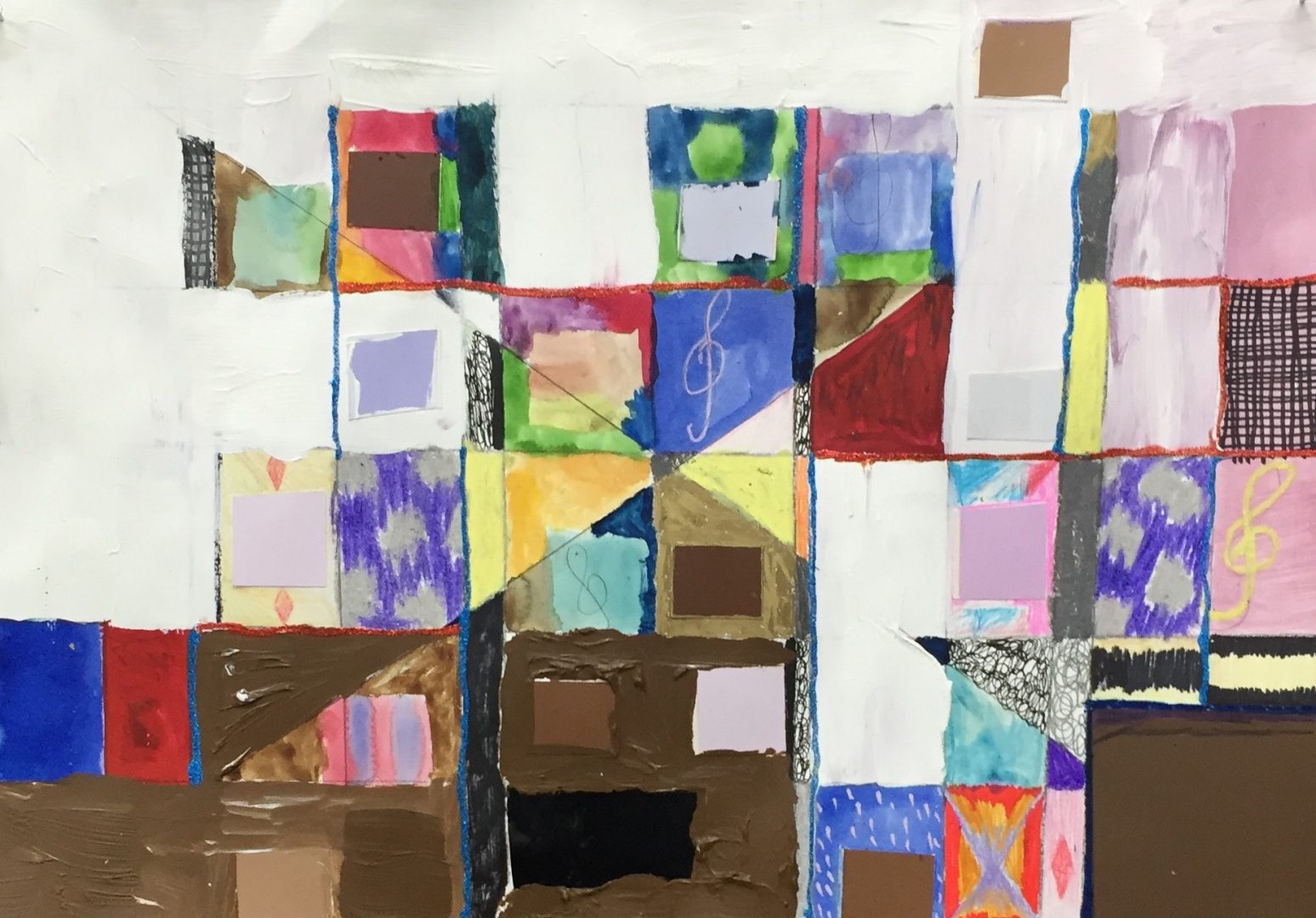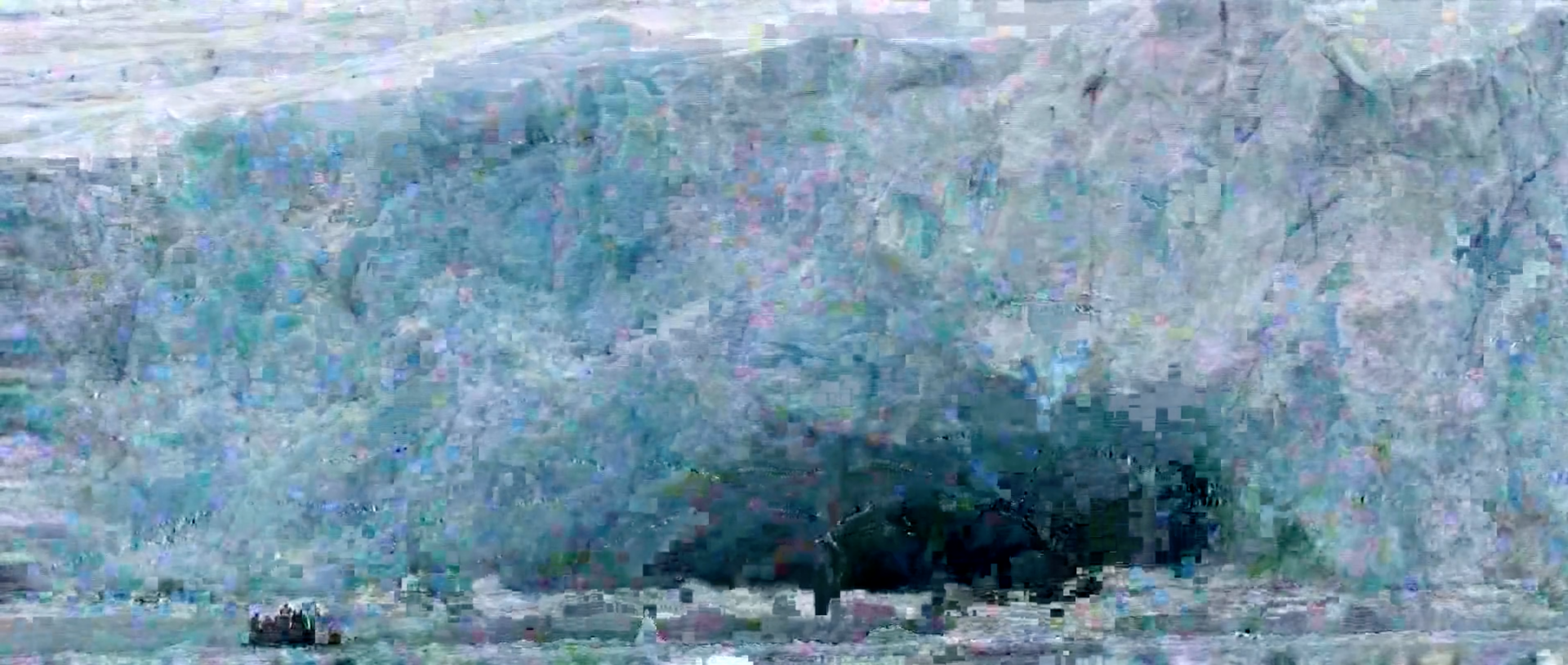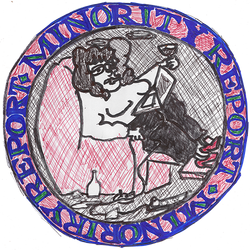I was lying at the entrance of my mother’s house, a python wrapped around my ankles. It began to curl up towards my face. I froze. “Maybe if I pretend I’m a path instead of another animal I’ll be ok” I thought. But the snake knew that I was full of blood. It began to lick my neck like a dog, trying to get me to understand. I woke in fright not from the fear of the snake but from the very fact that it might not be something to fear.
By the end of the week this dream python had grown and entered my waking hours. All day I read about the pandemic on the internet and in the afternoon I daydreamed that a giant serpent was moving through the world. The vibrations of the serpent—mother nature?—became discernible as many sounds of the capitalist industrial order came to a halt.
*
Soon after the pandemic had reached the United States a video went viral of celebrities, led by actress Gal Gadot, singing John Lennon and Yoko Ono’s Imagine. Each celebrity sung a different verse, from their vast living rooms and balconies with sweeping views: “Imagine all the people living for today… Imagine no possessions/ I wonder if you can/ no need for greed and hunger/ a brotherhood of man”. Under the pretence of calling for world peace, the celebrities chastised those unable to experience peace during the pandemic, those who cannot afford to isolate in mansions with gardens. The celebrities sang Imagine but they were not asking their audience to imagine, they were demanding their audience to enjoy what is not theirs, during the pandemic or ever: Lifestyles of the Rich and Famous.
In the original video clip for this song, Lennon and Ono walk along the driveway of their Berkshire property until they arrive at a large white house. Lennon plays a white piano and sings in a large white room on the second floor. Ono opens the white shutters of the windows with purpose and then sits at the piano with Lennon, staring intently into the distance. Ono creates a white cube within the Beatles money-mansion for her performance art. Lennon provides the house and the voice and Ono, who wrote the lyrics, provides the concept. The video now reads as a parody of 1968 ideology, like Gal Gadot’s video, and like Lennon and Ono’s more famous Bed-ins for peace artwork. As Slavoj Žižek explains in The Pervert’s Guide to Ideology, some cultural products from the early 70s—he talks about the orgy in Michelangelo Antonioni’s Zabriskie Point but we could include these works as well—seemed like fresh depictions of revolutionary actions at the time, but now come across like meaningless fashion commercials after the transformation of revolution into hegemony in the neoliberal order. The word “imagine” in the context of Ono’s other art and the Fluxus movement that she was a part of, however, might be less of an ideological demand and more didactic instruction—her 1964 book Grapefruit contains instruction poems, the first entitled VOICE PIECE FOR SOPRANO: “Scream. 1. against the wind 2. against the wall 3. against the sky”.
Stuck in my rental apartment during the first lockdown in Melbourne, I found a new place to sit: the side of the couch where I could see sky between the rectangles and triangles of the apartment buildings next door. I moved between looking at the sky and my computer screen. My computer didn’t have the right processor to create a virtual background in Zoom so people in my meetings could see behind me an artwork I painted as a teenager of a girl suspended mid dance, her body held up by an anonymous boy’s arm. It felt too revealing to bring to meetings and classes so I replaced it with Katherine Botten’s artwork: a rectangle with a thin x-cross dividing small squares filled with pinks and purples, blood red, glimpses of landscapes, treble clefs, all interrupted or held by thick swathes of white and brown. It seemed to be about the same thing as my painting but freed from the submission of the figure, changeable and infinite like the sky, an anti-flag.

In Zoom-psychoanalysis I no longer waited in my analyst’s waiting room, he waited in mine online. I stared in terror at my own couch and listened to the staticised bird calls from outside his window. Following a long silence from my side he said, “Let’s leave it there.” Afterwards I thought about his couch in the next suburb along and the poem I wrote last year about him as an angel facilitating a conversation between my stomach and the serpent underground—below the Persian rug, the couch, and the floor.
*
Ariana Grande’s Imagine, released in December 2018 might be the alternative viral imagining of collective loss we deserve. In Imagine, Grande sings “Step up the two of us, nobody knows us/ Get in the car like, Skrrt/ Stayin’ up all night, order me pad thai/ Then we gon’ sleep ‘til noon”. Grande fantasises about a boring night with her ex-boyfriend—I imagine it is about the musician Mac Miller who died of a fentanyl overdose in September 2018 (he had “imagine” tattooed on his arm). In the fantasy the couple transcends their shared jouissance—Miller’s addiction to drugs and Grande’s addiction to Miller as they relax and “act regular”. The listener is tossed around in a defanged trap beat—a welcome respite from the punishing EDM beats of albums past—in Grande’s grief, until the eruption at the end of the song. She sings “Can you… imagine it?/ Can you… imagine it? …” until the “Can you’s” are replaced with whistle tones—“imagine it/ imagine it/”—before the whistle tones and the “it” disappear and we are left with “imagine/ imagine”, her interpolative question realising its full potential as instruction.
In the lyric video clip for Imagine, the lyrics are superimposed on a video by Thomas Collet entitled The expedition went wrong. The video depicts a glacier “calving”—as cows birth calves, glaciers calve icebergs. The ice falls into the sea wiping out the small expedition team in their blow-up boat. The image is purposely glitched, the coding of the video scrambled by Collet so the individual pixels are foregrounded. As Grande sings the final chorus and reaches her whistle tones the image is completely abstracted, you can no longer make out the glacier or the sea and the blues and greys become red, fluoro green and purple, before the screen turns black. The kind of world we are instructed to imagine here is the one that we often won’t, the world that is ending. The music video does not allow the viewer to rest easy in the narrative fantasy of the first verses, a fantasy of an impossible cosy night in. This narrative is negated as the song crescendos towards the limits of pop music, towards Ariana’s whistle tones, the highest register of the human voice; and the limits of video, as the visuals depict a return to the Real of climate change, first in figuration and then in abstraction—a scrambled algorithm of pixels before the screen turns black.

In Imagine Grande is yearning in her grieving; the whistle tones are a spell to try to bring someone back to life. This same impulse is found in the song Nessun Dorma (None Shall Sleep), from Giacomo Puccini’s opera Turandot, which is about a man trying to find out the name of a princess, cold and shut out from her feelings, in order to win her over. It accompanies another viral video from the pandemic, an acrobatic display by the Acrobatica Nazionale Frecce Tricolori—the aerobatic demonstration team of the Italian Air Force—shared as example of unity and strength when Italy was enduring its initial viral surge of the pandemic. The planes swirl around in the shape of an arrow made up of colours of the Italian flag—Frecce Tricolori means tricolour arrows—while the opera plays a dialogue between the princess and her suitor—“Ma il mio mistero è chiuso in me/ il nome mio nessun saprà!/ No, no, sulla tua bocca lo dirò/ quando la luce splenderà! (But my secret is hidden within me, my name no one shall/ know/ …No!…No!…/ On your mouth, I will tell it when the light shines!)” Like Grande’s Imagine lyric video, this performance fuses a narrative of romantic love with a vision of the world. In Grande’s world, fantasy does not foreclose the possibility of grieving and of the Real returning, whereas in this video grief is avoided by investing libidinal energy into the fantasy of an infallible state power. It is possible to separate the beauty of the opera from the ugly, banal plane aerobatics, but propaganda is designed for easy watching so its easiest to see beautiful planes dancing.
*
In 2016, on the way back from a camping trip at Wilson’s Promontory on Boon Wurrung, Bunurong, and Gunaikurnai country, we stopped for fish and chips and watched Beyoncé’s new Formation music video. Beyoncé lay on top of a police car sinking below the surface of water flooding the streets—a reference to the floods in New Orleans following Hurricane Katrina. I wrote later on Twitter, “I was camping when Beyoncé released a new video… The breeze and the ocean must have been telling me I was missing out, for a second.” Sure, I was missing out on Beyoncé’s art but why did I want to know about the video as soon as it was released? Why did I feel like I was missing out on media while I was in nature? While I was swimming in the sea, far from the police and the empire, I was missing out on my ability to sink the cop in my heart and trust the water.
I had gone camping straight from a break-up and old traumata was pulsating through my body. Night-time did not provide respite. The moon that I could see through the door of the tent was an emergency light mirroring the currents of electricity running through my body. I talked long into the night with my friend, my cadence remaining unchanged like a car alarm that no-one could work out how to turn off.
The next day we went for a walk near the beach and I was still talking when we saw a snake moving on the sandy path ahead of us. The sight of it shocked me back into my body, the softness of its old vibration matching the vibrations I felt exceeding the outline of myself.
Cover image: Katherine Botten, Untitled (from This Beautiful Life series), 2016, acrylic on paper with collage.
